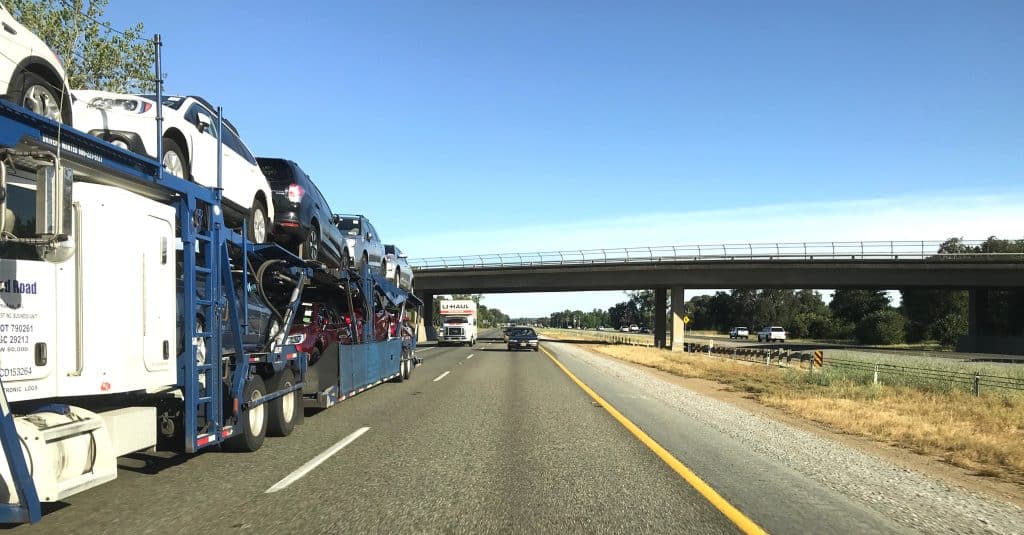Understanding The Basics Of Shipping An Electric Car
Shipping an electric car to Hawaii, especially with a company like RAT, involves several layers of preparation and understanding. First and foremost, it’s crucial to recognize the unique logistics involved in transporting a vehicle over water. Unlike standard shipping within the continental U.S., maritime transport introduces complexities such as saltwater exposure and stringent regulatory requirements.
Electric cars come with their own set of considerations. The battery system, for example, is a significant component that demands special attention due to its sensitivity and potential hazards if not handled properly. Ensuring that the battery is adequately charged—neither fully charged nor completely drained—can help mitigate risks during transit. It’s advisable to consult the vehicle’s manufacturer guidelines or RAT’s specific instructions regarding optimal battery levels for shipping.
Another key aspect is understanding the documentation required. Shipping an electric car involves more than just handing over your keys; detailed paperwork must be completed accurately to comply with both federal and state regulations. This includes proof of ownership, emissions compliance certificates (if applicable), and possibly additional forms related to the electric nature of your vehicle.
Insurance coverage is another critical factor to consider. While RAT may offer some level of insurance as part of their service package, it’s prudent to verify what exactly is covered. Given the high value of electric cars, you may want comprehensive coverage that protects against potential damage during transport.
Lastly, coordinating timelines is essential for a smooth shipping experience. Electric cars often require specific handling procedures which might extend typical shipping durations. Therefore, having clear communication with RAT about expected delivery times can help you plan accordingly upon arrival in Hawaii.
By grasping these foundational elements—battery care, proper documentation, insurance considerations, and timeline coordination—you’ll be well-equipped for a seamless transition when shipping your electric car to Hawaii with RAT.
Choosing RAT As Your Shipping Partner
Choosing RAT as your shipping partner for transporting an electric car to Hawaii can make the entire process considerably smoother and more efficient. As a well-established name in the maritime shipping industry, RAT offers a blend of experience, reliability, and customer service that is hard to match. Their specialization in shipping vehicles to the Hawaiian Islands provides you with peace of mind, knowing that your electric car is in capable hands.
One of the primary reasons to choose RAT is their extensive knowledge of both mainland and Hawaiian logistics. They understand the intricacies involved in transporting goods over large bodies of water and have perfected their processes to ensure timely and safe deliveries. This expertise is particularly beneficial when dealing with electric cars, which require special handling due to their unique components such as lithium-ion batteries.
RAT’s state-of-the-art facilities are equipped with advanced technology designed for secure loading and unloading procedures. Their staff undergoes rigorous training programs to stay updated on best practices for handling electric vehicles, ensuring minimal risk during transit. Additionally, RAT employs GPS tracking systems that allow you to monitor your car’s journey in real-time, giving you added reassurance throughout the shipping process.
Customer service is another area where RAT excels. From initial inquiries to final delivery, their team is dedicated to providing personalized support tailored to meet your specific needs. They offer comprehensive pre-shipping consultations where they explain all necessary preparations required for an electric car shipment—such as battery disconnection protocols—and answer any questions you may have.
Furthermore, RAT’s commitment to environmental sustainability aligns well with the ethos behind owning an electric vehicle. They employ eco-friendly practices wherever possible, from fuel-efficient ships to reduced emissions during operations.
In summary, choosing RAT as your shipping partner ensures a seamless experience marked by professionalism, safety, and environmental responsibility—key factors when entrusting someone with your valuable electric vehicle.
Preparing Your Electric Car For Transport
Preparing your electric car for transport to Hawaii with RAT involves several crucial steps that ensure the safety and integrity of your vehicle during its journey across the Pacific. First, it’s important to thoroughly clean both the interior and exterior of your car. This not only makes it easier for inspectors to conduct a detailed examination but also helps you take note of any pre-existing damage.
Documenting the condition of your electric car with photographs can be invaluable should any issues arise during transit.
Next, pay close attention to the battery level of your electric vehicle (EV). It is generally recommended to have the battery charged between 20% to 50%. This charge level is sufficient for loading and unloading operations while ensuring that there’s no excessive energy stored, which could pose a risk during transport.
It’s also advisable to deactivate any alarms or security systems in your EV. These systems can inadvertently trigger during shipping due to movement or vibrations, potentially causing unnecessary complications. Consult your vehicle’s manual if you’re unsure how to temporarily disable these features.
Securing loose parts is another essential step in preparing your electric car for transport. Remove or firmly secure any detachable items such as roof racks, spoilers, or antennas. Make sure all windows are fully closed and doors are locked but leave one key with RAT’s shipping team for necessary access.
Finally, review RAT’s specific requirements and guidelines regarding EV shipping. Each transportation company might have unique protocols or recommendations tailored specifically for electric vehicles. Understanding these guidelines in advance helps ensure compliance and smooth shipping process.
By taking these preparatory measures seriously, you can greatly mitigate potential risks and contribute significantly towards a hassle-free transportation experience for your electric vehicle as it makes its way to Hawaii with RAT.
Navigating Hawaii’s Import Regulations And Requirements
Navigating Hawaii’s import regulations and requirements for shipping an electric car can seem daunting, but understanding the process will ensure a smooth transition for your vehicle. First and foremost, it’s crucial to familiarize yourself with Hawaii’s unique laws and guidelines concerning vehicle imports. The state imposes strict emissions standards, even for electric vehicles (EVs), to maintain its pristine environment. Ensure your car complies with these regulations before initiating the shipping process.
Hawaii also requires all incoming vehicles to undergo a safety inspection upon arrival. This inspection certifies that your electric car meets the state’s safety standards and is roadworthy. Additionally, you must present a valid out-of-state registration if you’re transporting a newly purchased EV or if it’s already registered in another state.
Documentation plays a critical role in this process. You’ll need to have several key documents ready: the bill of lading from RAT, which serves as proof of shipment; the title of the vehicle; and any loan payoff information if applicable. These documents will be required during both the initial inspection and registration phases.
Moreover, it’s advisable to understand any quarantine protocols that might apply specifically to vehicles arriving from mainland states or other regions. While primarily focused on agricultural products, these protocols can sometimes extend to personal property such as cars.
Lastly, you should be prepared for potential fees associated with importing your electric car into Hawaii. These could include harbor dues, excise taxes, and registration fees unique to EVs due to their battery components and overall weight.
By comprehensively understanding these regulations and requirements before shipping your electric car with RAT, you can streamline the importation process and ensure that your vehicle is ready for use on Hawaiian roads without unnecessary delays or complications.
Estimating Costs And Budgeting For Shipping
When considering shipping an electric car to Hawaii with RAT Lines, a pivotal aspect that demands attention is the estimation of costs and budgeting for the shipment. This process involves several variables that can significantly influence the overall expense, thus requiring meticulous planning and thorough understanding.
Firstly, the base cost of shipping your electric vehicle is determined by factors such as the size and weight of the car. Electric cars often vary in dimensions and battery weight, which could affect pricing tiers. Additionally, RAT Lines offers different types of services—ranging from standard to expedited shipping—each with its own cost implications. It’s essential to choose a service that aligns not only with your budget but also with your timeline requirements.
Geographical considerations play a critical role as well. Shipping from major mainland ports like Los Angeles or Seattle might be more economical compared to less frequently serviced ports. Thus, you should factor in any potential additional transportation costs if you’re not located near these major hubs.
Insurance is another crucial element in estimating costs. While RAT may provide basic coverage, evaluating whether this suffices for your high-value electric vehicle or if additional insurance is warranted can prevent unforeseen financial strain due to damages during transit.
Furthermore, electric vehicles require special handling due to their batteries’ sensitivity and regulatory compliance needs. These specific requirements might entail extra charges for safe transport and adherence to environmental regulations.
Lastly, don’t overlook ancillary expenses such as terminal fees at both departure and arrival ports or any required modifications for local compliance once your vehicle reaches Hawaii.
By accounting for these various components—base shipping fees, service type selection, geographical factors, insurance options, special handling charges, and ancillary expenses—you can create a comprehensive budget plan that ensures no surprise costs derail your financial expectations when shipping an electric car with RAT Lines.
Ensuring Insurance And Safety Measures Are In Place
Shipping an electric car to Hawaii involves a series of logistical steps, one of the most crucial being ensuring that both insurance and safety measures are meticulously in place. Before entrusting your vehicle to RAT or any other shipping company, it’s essential to understand the complexities surrounding marine transport insurance and the specific safety protocols for electric vehicles.
Firstly, comprehensive marine insurance is a non-negotiable requirement. Standard auto insurance policies typically do not cover vehicles in transit, especially over water. It is vital to secure an adequate marine insurance policy that covers potential risks such as damage during loading and unloading, weather-related incidents, and even total loss at sea. Consult with your current insurer or seek a specialized provider to tailor a policy that meets these unique needs.
Confirm with RAT what their liability coverage includes and if additional supplemental policies are recommended.
Safety measures take on heightened importance when dealing with electric cars due to their unique components like lithium-ion batteries. These batteries can pose fire hazards if not handled correctly. Ensure that RAT has experience and specific protocols for transporting electric vehicles safely. This includes proper battery disconnection procedures, securing the vehicle to prevent movement during transit, and monitoring for any signs of damage or overheating.
Moreover, inquire about RAT’s adherence to regulatory standards set by maritime authorities regarding hazardous materials. Electric vehicles fall under this category due to their batteries, necessitating compliance with stringent guidelines for safe transport.
In summary, securing robust insurance coverage tailored for marine transport and verifying stringent safety protocols are indispensable steps when shipping an electric car to Hawaii with RAT. Taking these precautions will provide peace of mind knowing your valuable asset is protected throughout its journey across the Pacific Ocean.
Tracking And Receiving Your Electric Car In Hawaii
When it comes to tracking and receiving your electric car in Hawaii with RAT, there are several key aspects to consider for a smooth and stress-free experience. RAT provides comprehensive tracking options that allow you to monitor your vehicle’s journey from the mainland to the Hawaiian Islands. This real-time tracking is accessible through their online portal, giving you peace of mind as you watch your car progress through each stage of its voyage.
Upon arrival in Hawaii, the process of receiving your electric vehicle is streamlined but requires some preparation on your part. RAT typically notifies customers a few days before the expected arrival date, allowing ample time for you to make necessary arrangements. It’s essential to have all required documentation ready, including identification and proof of ownership. This ensures a swift handover when you go to pick up your car at RAT’s designated terminal.
RAT’s staff in Hawaii are well-trained in handling electric vehicles and can assist with any specific needs or concerns related to EVs. Whether it’s ensuring that charging ports are intact or checking for any signs of damage during transit, their expertise provides an added layer of reassurance.
Once you’ve received notification that your vehicle has arrived, it’s crucial to inspect it thoroughly before driving away. Check the exterior for any scratches or dents that may have occurred during shipping. Verify that all electrical systems are functioning correctly by powering on the vehicle and conducting basic tests like turning on headlights and checking battery levels.
The combination of advanced tracking capabilities and professional handling ensures that when shipping with RAT, your electric car will arrive in Hawaii safely and efficiently. With these steps taken care of, you’ll be ready to enjoy island life with the convenience and sustainability offered by an electric vehicle.









